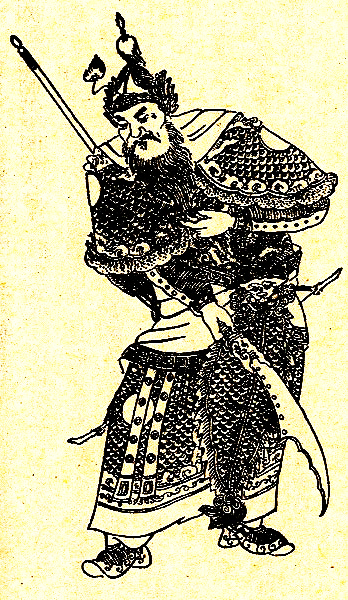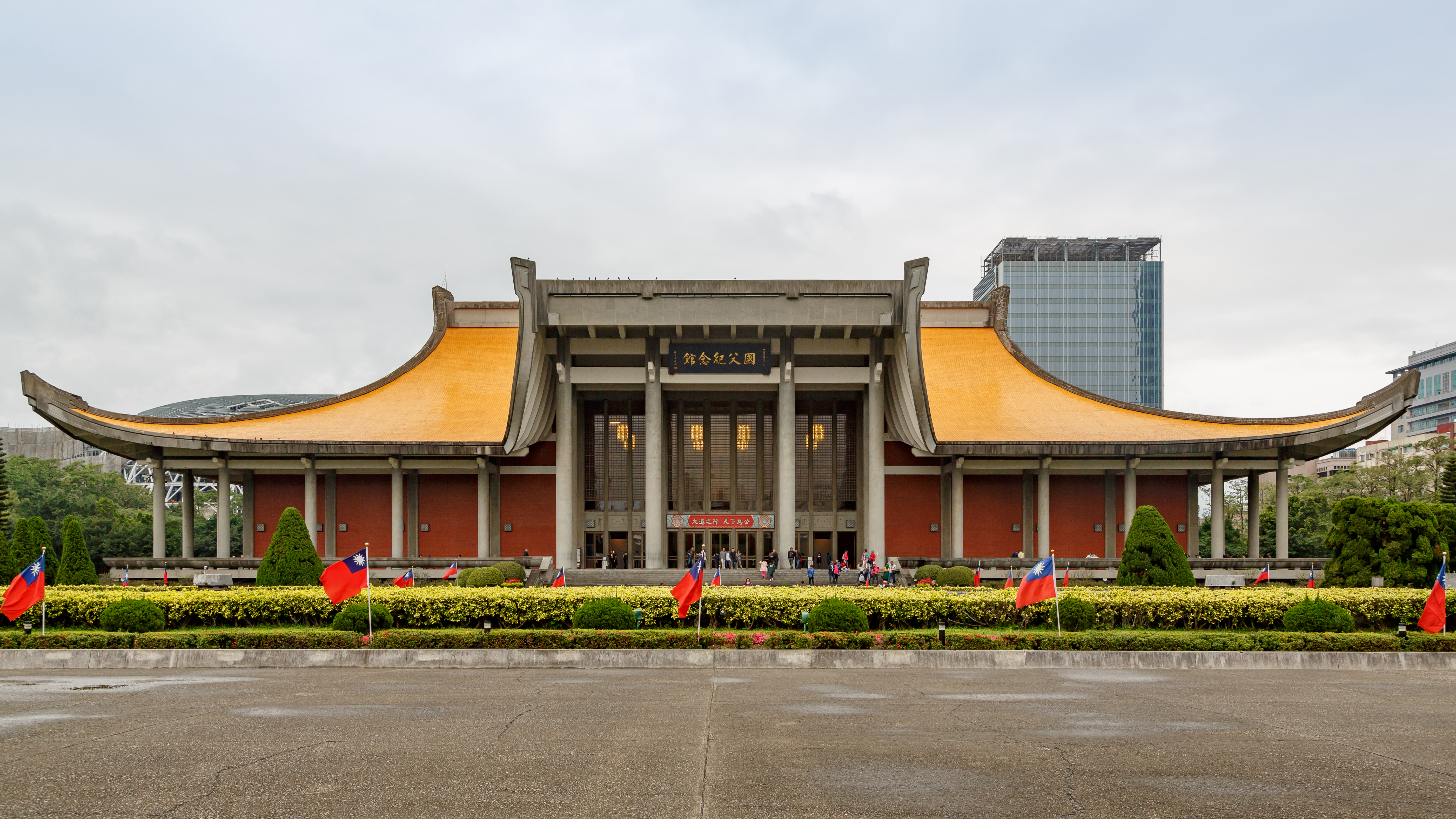|
Huang Baoyu
Huang Baoyu (; 1918–2000) was a Taiwanese artist, calligrapher and architect, known for designing the National Palace Museum in Taipei, Taiwan. His design for the museum was chosen after the original competition winner, Wang Da-hong, refused to modify his design to comply with the government's wishes. Huang specialised in the traditional Chinese palace style, and was the favourite architect of former leader, Chiang Kai-shek. Huang served as Chairman of the architecture department of the Chung Yuan Christian College. He also served in a number of public institutions, working on urban planning projects such as Shimen Reservoir back pool area layout plan (1962), Yangming National Park Project (1963), Kaohsiung Lianchi Lake Scenic Area Plan (1966) and Forest Garden Construction Plan (1966). Huang came to Taiwan from China in 1949, when he was appointed as a lecturer at the Provincial Institute of Technology. Notable works * Shimen Reservoir Monument (c.1962) * National Palace M ... [...More Info...] [...Related Items...] OR: [Wikipedia] [Google] [Baidu] |
Huang (surname)
Huang (; ) is a Chinese surname that originally means and refers to jade people were wearing and decorating in ancient times. While ''Huáng'' is the pinyin romanization of the word, it may also be romanized as Hwang (Korean surname), Hwang, Wong (surname), Wong, Waan, Wan, Waon, Hwong, Vong, Hung, Hong, Bong, Eng, Ng (name), Ng, Uy (surname), Uy, Wee, Oi, Oei, Oey, Ooi, Ong, or Ung due to pronunciations of the word in different dialects and languages. It is the 96th name on the ''Hundred Family Surnames'' poem.K. S. Tom. [1989] (1989). Echoes from Old China: Life, Legends and Lore of the Middle Kingdom. University of Hawaii Press. . This surname is known as Hwang (Korean name), Hwang in Korean language, Korean. In Vietnamese language, Vietnamese, the name is known as Hoàng or Huỳnh. Huang is the 7th most common surname in China. Huynh is the 5th most common surname in Vietnam. The population of Huangs in China and Taiwan was estimated at more than 35 million in 2020; it was a ... [...More Info...] [...Related Items...] OR: [Wikipedia] [Google] [Baidu] |
National Palace Museum
The National Palace Museum (; Pha̍k-fa-sṳ: Kwet-li̍p kù-kiung pok-vu̍t-yèn), is a museum in Taipei, Republic of China (Taiwan). It has a permanent collection of nearly 700,000 pieces of Chinese artifacts and artworks, many of which were moved from the Palace Museum in the Forbidden City in Beijing, as well as five other institutions throughout mainland China during the ROC retreat. These collections had been transferred to several locations before finally settling on present-day Shilin, Taipei and establishing the museum there in 1965, making it one of the largest of its type in the world. The museum's collection encompasses items spanning 8,000 years of Chinese history from the neolithic age to the modern period. The National Palace Museum shares its roots with the Palace Museum of Beijing, whose extensive collection of artwork and artifacts were built upon the imperial collections of the Ming and Qing dynasties. History Establishment in Beijing and relocation T ... [...More Info...] [...Related Items...] OR: [Wikipedia] [Google] [Baidu] |
Zhongxing Guesthouse
The Zhongxing Guesthouse () also known as the Yangmingshuwu is a historical site located in on Zhongxing road in Yangmingshan National Park in the Beitou District of Taipei, Taiwan. It was constructed between 1969 and 1970 by late Republic of China President Chiang Kai-shek for reception of important foreign guests and to act as a summer residence. It was designed by architect Huang Baoyu (黃寶瑜), who also designed the National Palace Museum. Overview Chiang's largest villa, the Yangmingshuwu, is set on 37 acres of plum trees and mountain landscape. The villa was used primarily as a summer retreat and the Chinese-style home includes courtyards, covered walkways and a fully stocked goldfish. The generalissimo reportedly favored morning walks and meditation sessions on the grounds, while Madame Chiang painted watercolor landscapes in her second floor studio. During the time the Zhongxing Guesthouse was in operation, the surrounding area, including Zhongxing road was closed to ... [...More Info...] [...Related Items...] OR: [Wikipedia] [Google] [Baidu] |
Wang Da-hong
Wang Da-hong (; 6 July 1917 – 28 May 2018) was a Chinese-born Taiwanese architect. Regarded as one of the pioneers of modernist architecture in Taiwan, his architectural philosophy, whilst very modern in its application, was informed by both the traditional Chinese garden and the Siheyuan – a historical type of family residence which comprises several dwellings around a courtyard. Biography Wang was born in Beijing, but grew up in Shanghai and Suzhou. His father was Wang Ch'ung-hui, a prominent Chinese jurist, diplomat and politician. During the early 1930s, he went to school in Switzerland. In 1936, he started studying engineering at Cambridge University, before switching to architecture. In 1940, he enrolled at Harvard University, where he was taught by Walter Gropius. There, Wang was briefly a classmate of Huang Zuo-shen (aka Henry Huang), who would later become known as the founding director of The School of Architecture at Tongji University. Wang was also a classmate of ... [...More Info...] [...Related Items...] OR: [Wikipedia] [Google] [Baidu] |
Chiang Kai-shek
Chiang Kai-shek (31 October 1887 – 5 April 1975), also known as Chiang Chung-cheng and Jiang Jieshi, was a Chinese Nationalist politician, revolutionary, and military leader who served as the leader of the Republic of China (ROC) from 1928 to his death in 1975 – until 1949 in mainland China and from then on in Taiwan. After his rule was confined to Taiwan following his defeat by Mao Zedong in the Chinese Civil War, he continued to head the ROC government until his death. Born in Chekiang (Zhejiang) Province, Chiang was a member of the Kuomintang (KMT), and a lieutenant of Sun Yat-sen in the revolution to overthrow the Beiyang government and reunify China. With help from the Soviets and the Chinese Communist Party (CCP), Chiang organized the military for Sun's Canton Nationalist Government and headed the Whampoa Military Academy. Commander-in-chief of the National Revolutionary Army (from which he came to be known as a Generalissimo), he led the Northern Expedition from ... [...More Info...] [...Related Items...] OR: [Wikipedia] [Google] [Baidu] |
Taiwanese Architects
Taiwanese may refer to: * Taiwanese language, another name for Taiwanese Hokkien * Something from or related to Taiwan (Formosa) * Taiwanese aborigines, the indigenous people of Taiwan * Han Taiwanese, the Han people of Taiwan * Taiwanese people, residents of Taiwan or people of Taiwanese descent * Taiwanese language (other) * Taiwanese culture * Taiwanese cuisine * Taiwanese identity Taiwanese people may be generally considered the people of Taiwan who share a common culture, ancestry and speak Taiwanese Mandarin, Hokkien, Hakka or indigenous Taiwanese languages as a mother tongue. Taiwanese people may also refer to the i ... See also * {{disambiguation Language and nationality disambiguation pages ... [...More Info...] [...Related Items...] OR: [Wikipedia] [Google] [Baidu] |
Chinese Architects
Chinese can refer to: * Something related to China * Chinese people, people of Chinese nationality, citizenship, and/or ethnicity **''Zhonghua minzu'', the supra-ethnic concept of the Chinese nation ** List of ethnic groups in China, people of various ethnicities in contemporary China ** Han Chinese, the largest ethnic group in the world and the majority ethnic group in Mainland China, Hong Kong, Macau, Taiwan, and Singapore ** Ethnic minorities in China, people of non-Han Chinese ethnicities in modern China ** Ethnic groups in Chinese history, people of various ethnicities in historical China ** Nationals of the People's Republic of China ** Nationals of the Republic of China ** Overseas Chinese, Chinese people residing outside the territories of Mainland China, Hong Kong, Macau, and Taiwan * Sinitic languages, the major branch of the Sino-Tibetan language family ** Chinese language, a group of related languages spoken predominantly in China, sharing a written script (Chinese c ... [...More Info...] [...Related Items...] OR: [Wikipedia] [Google] [Baidu] |
People From Jiangyin
A person ( : people) is a being that has certain capacities or attributes such as reason, morality, consciousness or self-consciousness, and being a part of a culturally established form of social relations such as kinship, ownership of property, or legal responsibility. The defining features of personhood and, consequently, what makes a person count as a person, differ widely among cultures and contexts. In addition to the question of personhood, of what makes a being count as a person to begin with, there are further questions about personal identity and self: both about what makes any particular person that particular person instead of another, and about what makes a person at one time the same person as they were or will be at another time despite any intervening changes. The plural form "people" is often used to refer to an entire nation or ethnic group (as in "a people"), and this was the original meaning of the word; it subsequently acquired its use as a plural form of per ... [...More Info...] [...Related Items...] OR: [Wikipedia] [Google] [Baidu] |
Taiwanese People From Jiangsu
Taiwanese may refer to: * Taiwanese language, another name for Taiwanese Hokkien * Something from or related to Taiwan (Formosa) * Taiwanese aborigines, the indigenous people of Taiwan * Han Taiwanese, the Han people of Taiwan * Taiwanese people, residents of Taiwan or people of Taiwanese descent * Taiwanese language (other) * Taiwanese culture * Taiwanese cuisine * Taiwanese identity See also * {{disambiguation Language and nationality disambiguation pages ... [...More Info...] [...Related Items...] OR: [Wikipedia] [Google] [Baidu] |
Painters From Wuxi
Painting is the practice of applying paint, pigment, color or other medium to a solid surface (called the "matrix" or "support"). The medium is commonly applied to the base with a brush, but other implements, such as knives, sponges, and airbrushes, can be used. In art, the term ''painting ''describes both the act and the result of the action (the final work is called "a painting"). The support for paintings includes such surfaces as walls, paper, canvas, wood, glass, lacquer, pottery, leaf, copper and concrete, and the painting may incorporate multiple other materials, including sand, clay, paper, plaster, gold leaf, and even whole objects. Painting is an important form in the visual arts, bringing in elements such as drawing, composition, gesture (as in gestural painting), narration (as in narrative art), and abstraction (as in abstract art). Paintings can be naturalistic and representational (as in still life and landscape painting), photographic, abstract, narrative, s ... [...More Info...] [...Related Items...] OR: [Wikipedia] [Google] [Baidu] |
1918 Births
This year is noted for the end of the World War I, First World War, on the eleventh hour of the eleventh day of the eleventh month, as well as for the Spanish flu pandemic that killed 50–100 million people worldwide. Events Below, the events of World War I have the "WWI" prefix. January * January – 1918 flu pandemic: The "Spanish flu" (influenza) is first observed in Haskell County, Kansas. * January 4 – The Finnish Declaration of Independence is recognized by Russian Soviet Federative Socialist Republic, Soviet Russia, Sweden, German Empire, Germany and France. * January 9 – Battle of Bear Valley: U.S. troops engage Yaqui people, Yaqui Native American warriors in a minor skirmish in Arizona, and one of the last battles of the American Indian Wars between the United States and Native Americans. * January 15 ** The keel of is laid in Britain, the first purpose-designed aircraft carrier to be laid down. ** The Red Army (The Workers and Peasants Red Army) ... [...More Info...] [...Related Items...] OR: [Wikipedia] [Google] [Baidu] |





_1938.jpg)

